
How to Use step up converter: Examples, Pinouts, and Specs
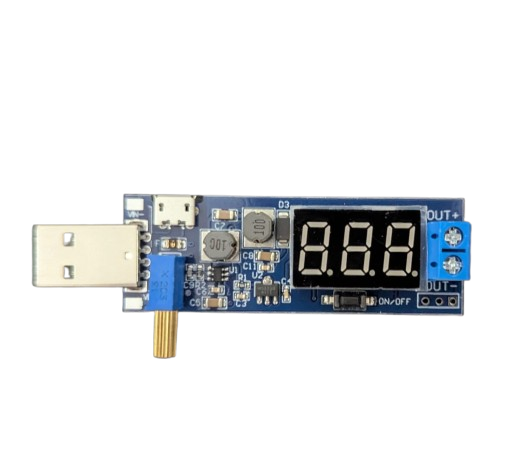
 Design with step up converter in Cirkit Designer
Design with step up converter in Cirkit DesignerIntroduction
A step up converter, also known as a boost converter, is a DC-DC converter that increases the input voltage to a higher output voltage while maintaining power balance. This component is widely used in applications where a higher voltage is required from a lower voltage source, such as in battery-powered devices, renewable energy systems, and portable electronics.
Explore Projects Built with step up converter
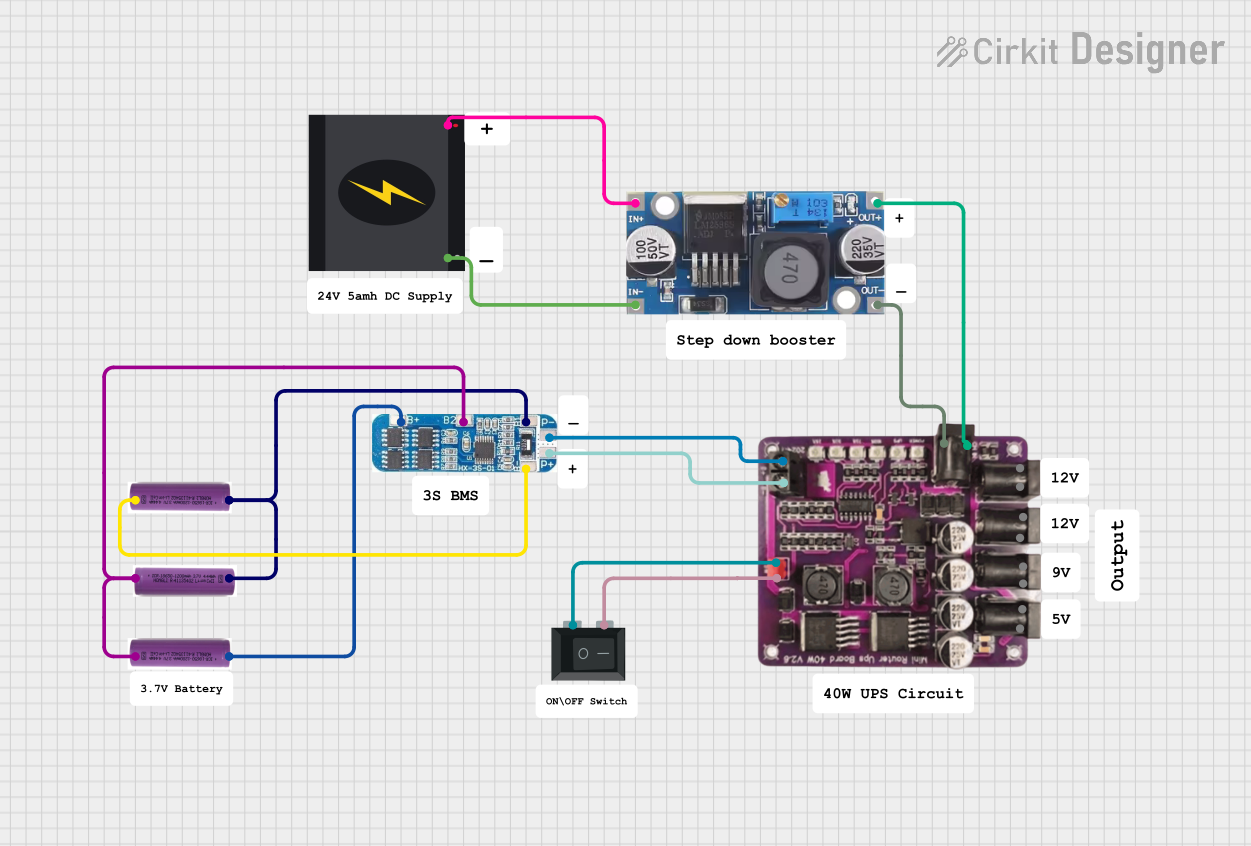
 Open Project in Cirkit Designer
Open Project in Cirkit Designer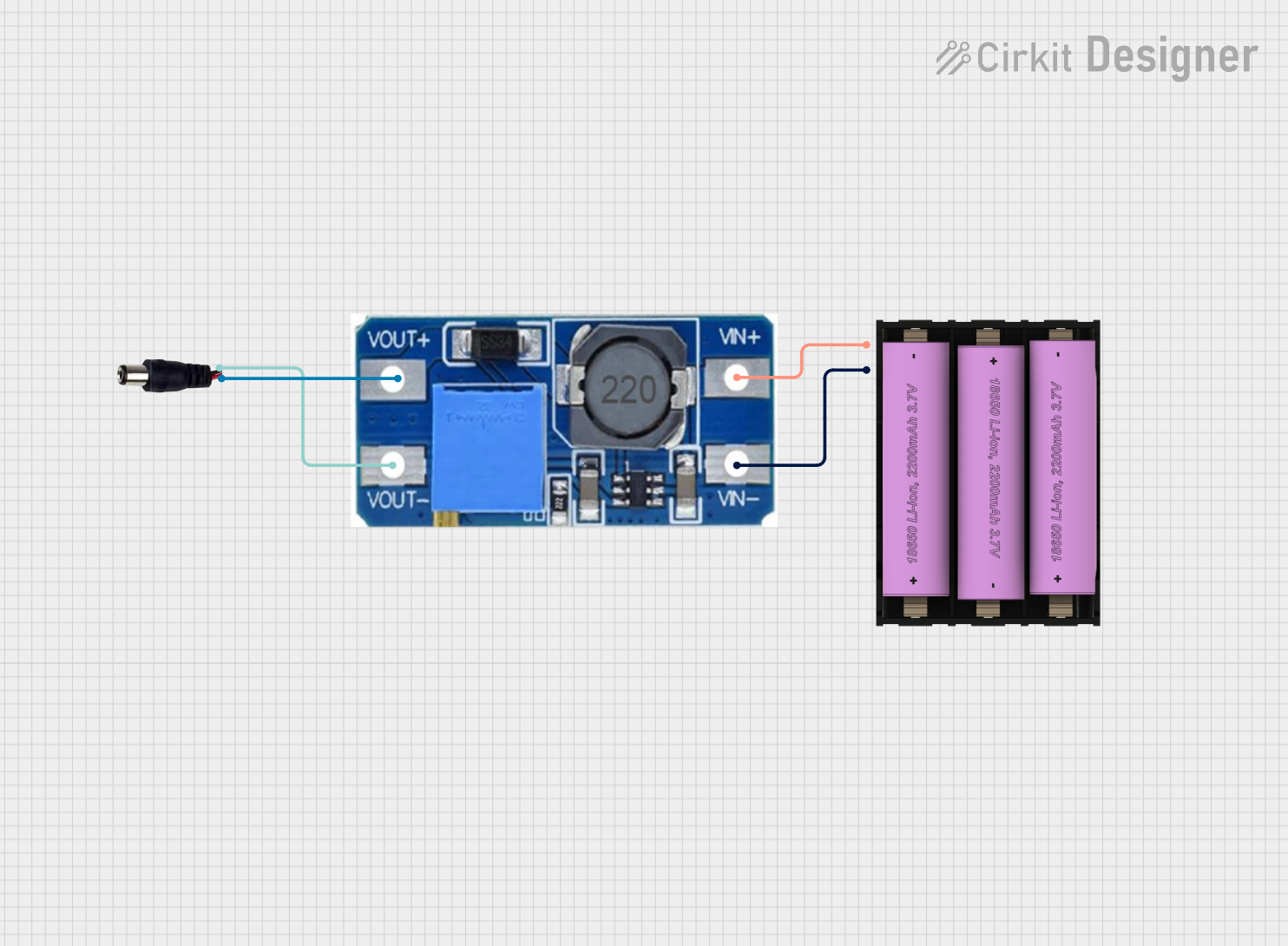
 Open Project in Cirkit Designer
Open Project in Cirkit Designer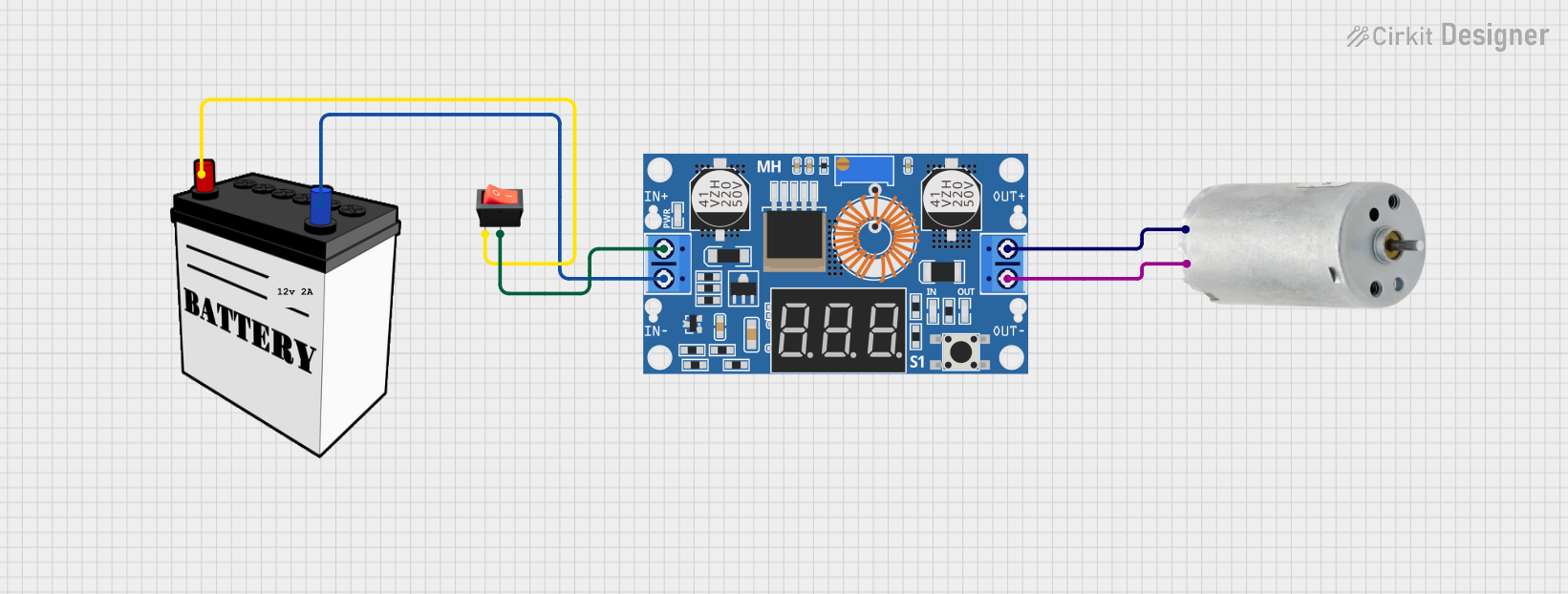
 Open Project in Cirkit Designer
Open Project in Cirkit Designer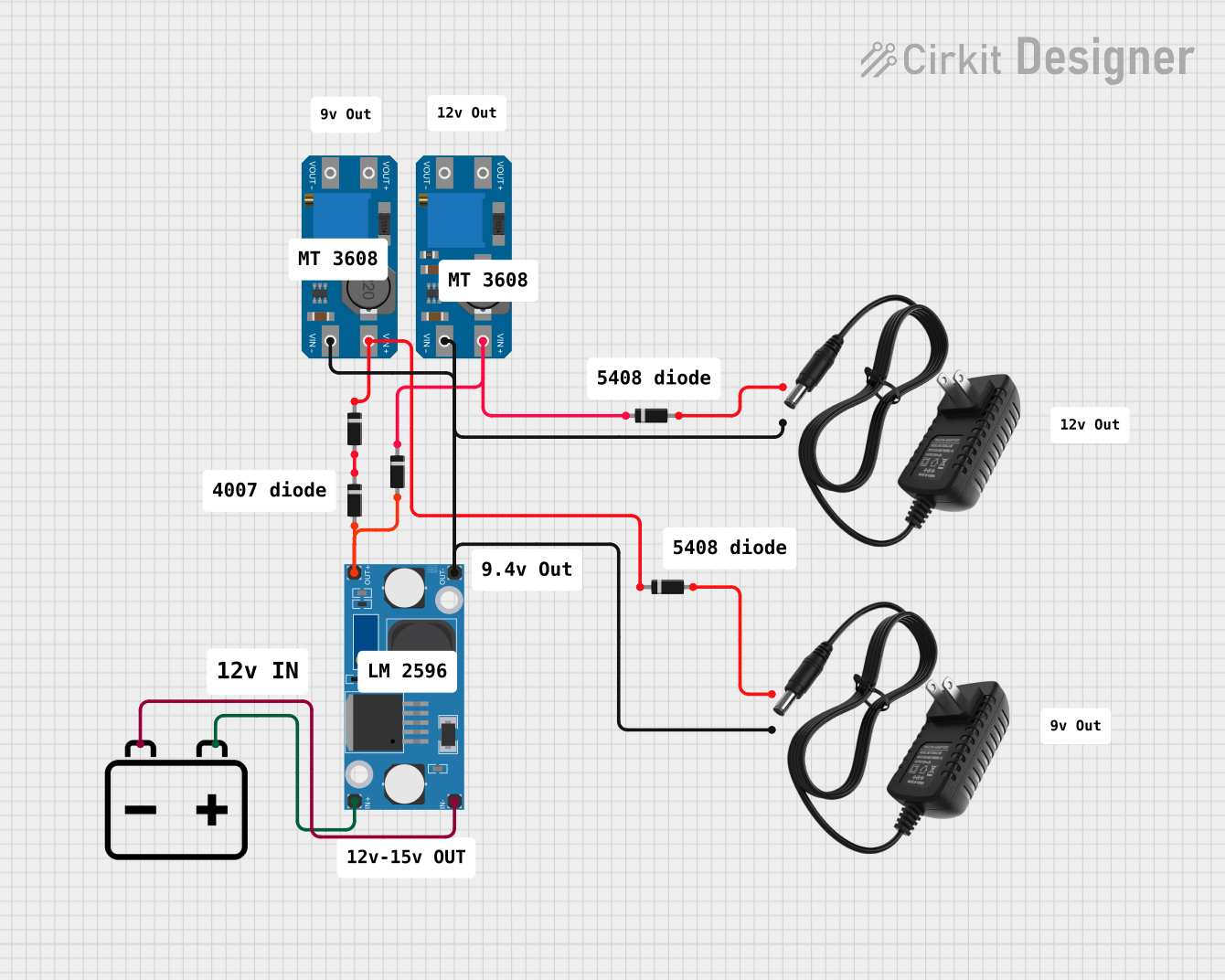
 Open Project in Cirkit Designer
Open Project in Cirkit DesignerExplore Projects Built with step up converter

 Open Project in Cirkit Designer
Open Project in Cirkit Designer
 Open Project in Cirkit Designer
Open Project in Cirkit Designer
 Open Project in Cirkit Designer
Open Project in Cirkit Designer
 Open Project in Cirkit Designer
Open Project in Cirkit DesignerCommon Applications and Use Cases
- Powering high-voltage devices from low-voltage batteries
- Solar power systems to step up panel voltage
- LED drivers for high-power LEDs
- Electric vehicles and robotics
- Portable power banks and chargers
Technical Specifications
Below are the key technical details for the step up converter (Manufacturer: China, Part ID: Converter):
General Specifications
| Parameter | Value |
|---|---|
| Input Voltage Range | 3V to 32V |
| Output Voltage Range | 5V to 35V |
| Maximum Output Current | 2A (continuous), 3A (peak) |
| Efficiency | Up to 92% |
| Switching Frequency | 150 kHz |
| Operating Temperature | -40°C to +85°C |
| Dimensions | 43mm x 21mm x 14mm |
Pin Configuration and Descriptions
| Pin Name | Pin Number | Description |
|---|---|---|
| VIN | 1 | Positive input voltage terminal (3V to 32V). |
| GND | 2 | Ground terminal for input and output. |
| VOUT | 3 | Positive output voltage terminal (5V to 35V). |
| ADJ | 4 | Voltage adjustment pin (optional, for tuning). |
Usage Instructions
How to Use the Step Up Converter in a Circuit
- Connect the Input Voltage:
- Attach the positive terminal of your power source to the
VINpin. - Connect the negative terminal of your power source to the
GNDpin.
- Attach the positive terminal of your power source to the
- Connect the Output Load:
- Attach the positive terminal of your load to the
VOUTpin. - Connect the negative terminal of your load to the
GNDpin.
- Attach the positive terminal of your load to the
- Adjust the Output Voltage (if needed):
- Use a small screwdriver to turn the potentiometer on the module.
- Clockwise rotation increases the output voltage, while counterclockwise decreases it.
- Use a multimeter to monitor the output voltage during adjustment.
- Power On:
- Ensure all connections are secure and power on the input source.
Important Considerations and Best Practices
- Input Voltage: Ensure the input voltage is within the specified range (3V to 32V).
- Output Voltage: Do not exceed the maximum output voltage (35V) or current (3A peak).
- Heat Dissipation: For high-power applications, consider adding a heatsink or active cooling to prevent overheating.
- Polarity: Double-check the polarity of your connections to avoid damaging the module.
- Load Testing: Gradually increase the load to ensure stable operation and avoid overloading the converter.
Example: Using the Step Up Converter with an Arduino UNO
Below is an example of how to use the step up converter to power an Arduino UNO from a 3.7V Li-ion battery:
Circuit Connections
- Connect the positive terminal of the Li-ion battery to the
VINpin of the step up converter. - Connect the negative terminal of the battery to the
GNDpin of the converter. - Adjust the output voltage to 9V using the potentiometer.
- Connect the
VOUTpin of the converter to the Arduino UNO'sVINpin. - Connect the
GNDpin of the converter to the Arduino UNO'sGNDpin.
Sample Arduino Code
// Example code to blink an LED connected to pin 13 of the Arduino UNO
// Ensure the step up converter is providing 9V to the Arduino's VIN pin
void setup() {
pinMode(13, OUTPUT); // Set pin 13 as an output pin
}
void loop() {
digitalWrite(13, HIGH); // Turn the LED on
delay(1000); // Wait for 1 second
digitalWrite(13, LOW); // Turn the LED off
delay(1000); // Wait for 1 second
}
Troubleshooting and FAQs
Common Issues and Solutions
No Output Voltage:
- Check all connections for proper polarity and secure attachment.
- Verify that the input voltage is within the specified range.
- Ensure the potentiometer is not set to the minimum output voltage.
Overheating:
- Reduce the load current to within the rated limits.
- Add a heatsink or active cooling to the module.
Unstable Output Voltage:
- Check for loose connections or poor solder joints.
- Ensure the input voltage is stable and not fluctuating.
Output Voltage Not Adjustable:
- Verify that the potentiometer is functional and not damaged.
- Ensure the input voltage is higher than the minimum required for adjustment.
FAQs
Q: Can I use this step up converter to power a 12V device from a 5V USB source?
A: Yes, as long as the input current from the USB source is sufficient to meet the power requirements of the 12V device.
Q: What happens if I exceed the maximum output current?
A: Exceeding the maximum output current may cause the module to overheat, shut down, or become permanently damaged.
Q: Can I use this module with a solar panel?
A: Yes, but ensure the solar panel's output voltage and current are within the module's input range and power limits.
Q: Is the module protected against reverse polarity?
A: No, this module does not have reverse polarity protection. Always double-check your connections before powering on.